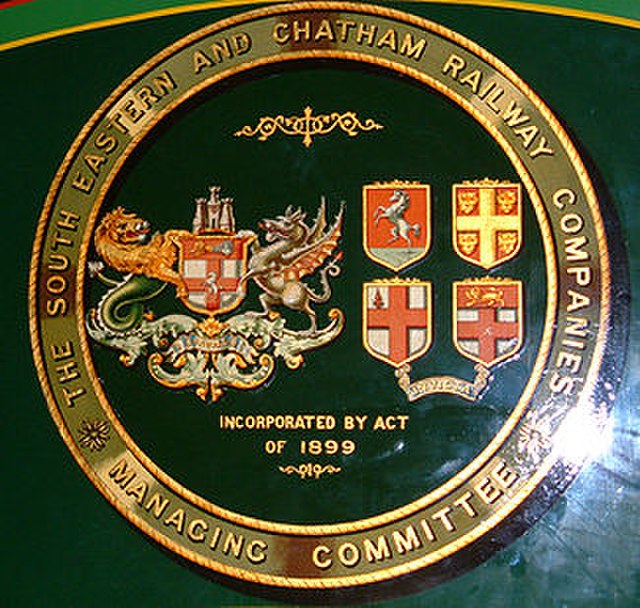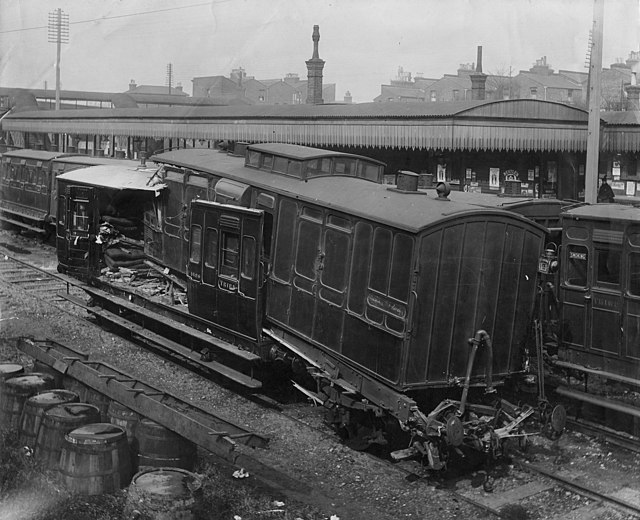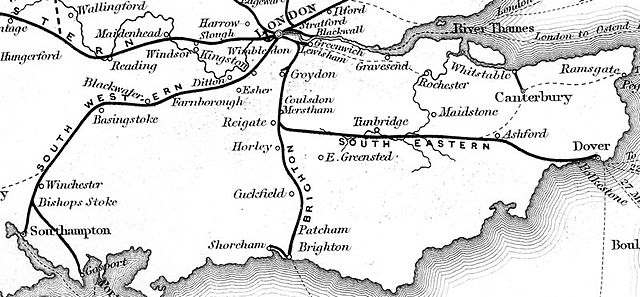South Eastern and Chatham Railway
The South Eastern and Chatham Railway Companies Joint Management Committee (SE&CRCJMC), known as the South Eastern and Chatham Railway (SE&CR), was a working union of two neighbouring rival railways, the South Eastern Railway (SER) and London, Chatham and Dover Railway (LC&DR), which operated between London and south-east England. Between 1899 and 1923, the SE&CR had a monopoly of railway services in Kent and to the main Channel ports for ferries to France and Belgium.
South Eastern and Chatham Railway
A SECR O1 Class (rebuilt from SER O class) 0-6-0, originally built in 1896
Damaged carriages from the St Johns 1898 train crash.
South Eastern and Chatham Railway (SECR) P Class No. 323
South Eastern Railway (England)
The South Eastern Railway (SER) was a railway company in south-eastern England from 1836 until 1922. The company was formed to construct a route from London to Dover. Branch lines were later opened to Tunbridge Wells, Hastings, Canterbury and other places in Kent. The SER absorbed or leased other railways, some older than itself, including the London and Greenwich Railway and the Canterbury and Whitstable Railway. Most of the company's routes were in Kent, eastern Sussex and the London suburbs, with a long cross-country route from Redhill in Surrey to Reading, Berkshire.
The South Eastern Railway's former headquarters in Tooley Street, London, near London Bridge station.
Railways in the South East of England in 1840
Charing Cross before it was built over with offices with the later SR initials retained.
Borough Market Junction signal box, a South Eastern Railway Type design on display outside the station hall at the National Railway Museum, York.








